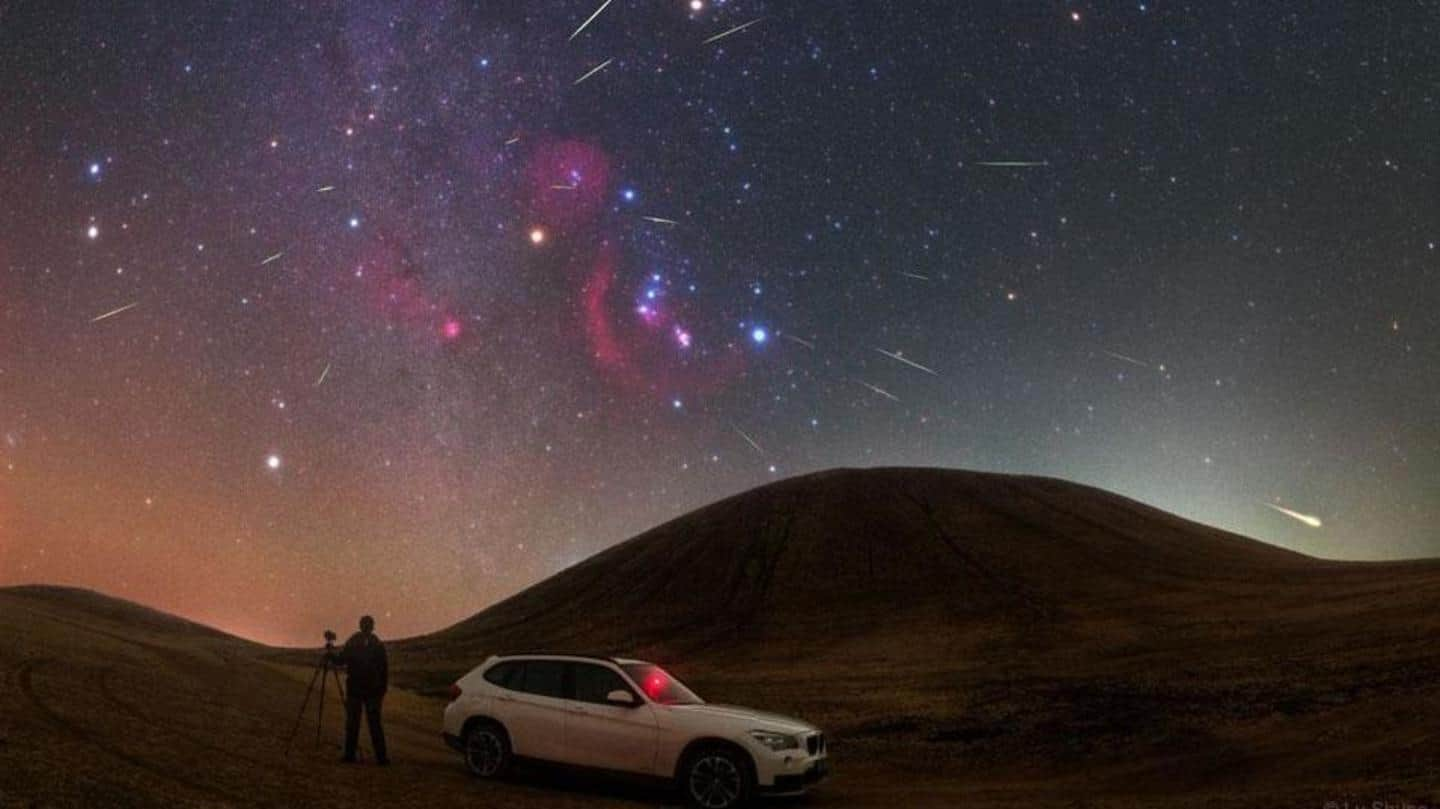
How to watch the Orionid meteor shower tonight in India
What's the story
October is certainly a happening month for stargazers. After the Draconid meteor shower, we will now witness a similar celestial event. The Orionid meteor shower is said to be at its peak from October 21 to October 22. According to EarthSky, you can observe as many as 10 to 20 meteors every hour from a dark location. Here's everything you need to know.
Context
Why does this story matter?
The Orionid meteor shower occurs when Earth intersects the orbit of Halley's Comet. It is one of the brightest and fastest meteor showers. The Halley's Comet orbits the Sun in a retrograde manner, that is opposite to the direction that Earth goes. This means that the comet emanates meteor showers in two directions. Another meteor shower (Eta Aquariids) will be generated in May 2023.
Facts
The Orionid showers are visible every year during mid-October
The Halley's Comet comes close to Earth once in 75 years. However, meteor showers are visible every year, peaking around mid-October, due to the trail of dust and debris left behind. The radiant, or the point from where the meteor shower emerges, lies north of constellation Orion's bright star Betelgeuse. The meteor shower commenced on September 26 and will be visible till November 22.
Tracking
Yes, the meteor shower will be visible in India
The Orionid meteor showers are visible from both Northern and Southern hemispheres. It would be visible at its best right after midnight. The presence of the Moon is not expected to hinder your observation. You can check out if the meteor showers are visible from your current location or anywhere across the globe by referring to portals such as Time and Date.
Information
Where should you look?
Do not focus only on constellation Orion. They are scattered across the night sky and the meteors will appear to be short. Instead, to capture the longer train of the meteor showers, shift your gaze 45 to 90 degrees away from the radiant.
Suggestions
What is the best way to watch the meteor showers?
Find a dark area away from any light source. You don't require a telescope but you might need the compass on your smartphone. Recline comfortably with your feet facing northeast if you are in the southern hemisphere or southeast if you are in the northern hemisphere. Allow your eyes at least 30 minutes to adjust to the lighting of the night sky. Happy sky-watching!